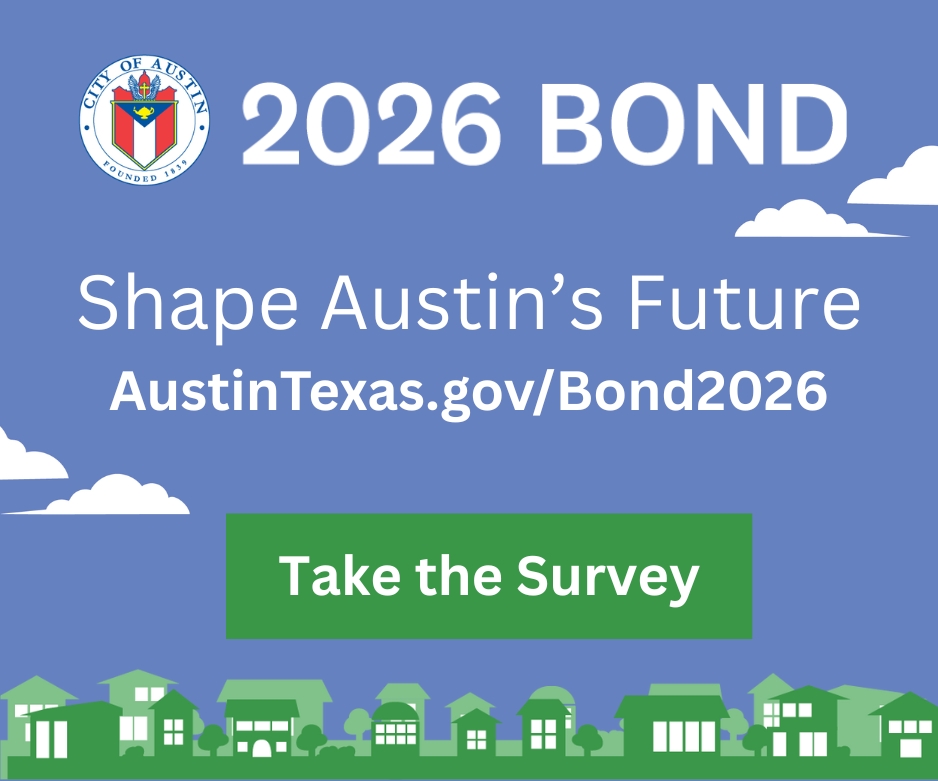About the Author
Mark Richardson is a multimedia journalist, editor and writer who has worked in digital, print and broadcast media for three decades. He is a nationally recognized editor and reporter who has covered government, politics and the environment. A journalism graduate from the University of Texas at Austin, he was recently awarded a Foundation for Investigative Journalism grant and has three Associated Press Managing Editors awards for excellence in reporting.
Newsletter Signup
The Austin Monitor thanks its sponsors. Become one.
Most Popular Stories
- Despite safety concerns, Council OKs new buildings above Shoal Creek
- Texas lawmakers finalize bill limiting property owners’ right to protest new homes nearby
- A multi-family rezoning at the rugged edge of Northwest Austin
- As Acacia Cliffs rezoning is approved, Critics say Council has sold out on its affordability commitments
- City eyes fund to preserve affordable housing, capitalize on overbuilt apartment market
-
Discover News By District
Popular Whispers
Sorry. No data so far.
Community survey sheds light on local priorities
Thursday, May 6, 2010 by Mark Richardson
Austinites are not afraid to express their opinions — just ask Council members at 11pm after they’ve listened to the 43rd environmental activist testify against planting non-native shrubs outside a new pizza emporium.
However, city officials gathering public input for the Imagine Austin Comprehensive Plan process decided that while the opinions of stakeholders and activists were extremely valid, they could use something a bit more scientific to aid in the process of planning for the city’s next few decades. So, they commissioned the 2010 Community Survey.
In the results of that questionnaire, Austinites declared that:
- Music and culture are a “major strength” of the city;
- They preferred living in close proximity to a fire station over other community amenities such as grocery stores and hospitals;
- Officials should spend the most transportation dollars on unclogging the freeways; and
- Planners should concentrate the most money on improving the area’s public schools.
The city’s Planning and Development Review Department engaged the services of the ETC Institute of
The city was divided into five geographic zones and at least 245 responses came from each area. The survey’s authors say the result of the random sample of households has a 95 percent level of confidence with a margin of error of +/- 2.7 percent.
“The goal was to gather statistically backed data to compare with the public input we got from the early sessions back in October and November. We wanted to have a broad representation of public input,” said Greg Claxton, an associate planner with Planning and Development Review. “We were testing to see how the input we received from stakeholders compared to statistically correct random data, to see if there were any major differences.”
Claxton said the survey was also used in a series of public meetings held around
“We wanted to know what kind of improvements they wanted to see in city services,” he said. “Some of the results will probably be useful to other city departments as they plan future programs.”
In the survey, among other questions, residents were asked to rate the strengths of the city, the importance of living near various facilities and amenities, and potential areas for growth and development. Respondents were asked in each question to rate a number of factors and were not limited to a single answer.
Asked to rate the strengths of the city, respondents rated as a “major strength” or “strength”: availability of arts, music and cultural amenities (79 percent); the University of Texas (76 percent); the State Capital (75 percent); unique local identity (74 percent); availability of parks and open space (73 percent); and quality of local businesses (73 percent).
The facilities and amenities that respondents rated as being “very important” or “somewhat important” to live near are: fire stations (93 percent); grocery stores (92 percent); hospitals and medical facilities (91 percent); parks, sports, and recreation facilities (87 percent); shopping areas (84 percent); place of employment (82 percent); sidewalks, biking and hiking trails (80 percent); and good schools (80 percent).
The areas where households most support growth and development are: near public transportation stations, stops, and routes (56 percent), centers outside of downtown (50 percent), and along roadway corridors (43 percent).
The transportation issues that respondents feel should receive the most emphasis from city leaders over the next two years are: ease of travel by car on freeways (49 percent), ease of north/south travel in Austin (37 percent), quality of public transportation – bus service (33 percent), ease of travel by car on major streets (31 percent), and ease of east/west travel in Austin (30 percent).
Asked to allocate $100 among various transportation improvements, respondents said would allocate $27 for improvements to freeways. The remaining $73 would be allocated as follows: improvements to major streets throughout
Based on the sum of their top four choices, the ideas that best represent respondents’ vision for the future of
Asked to allocate $100 among various capital improvement initiatives, respondents said they would allocate $25 to improve the transportation system. The remaining $75 would be allocated as follows: develop health and human service facilities ($21), repair and restore deteriorating infrastructure ($16), develop public safety facilities ($13), develop parks and recreation and facilities ($9), develop community facilities ($8), acquire open space ($6), and “other” ($2).
Imagine
You're a community leader
And we’re honored you look to us for serious, in-depth news. You know a strong community needs local and dedicated watchdog reporting. We’re here for you and that won’t change. Now will you take the powerful next step and support our nonprofit news organization?



